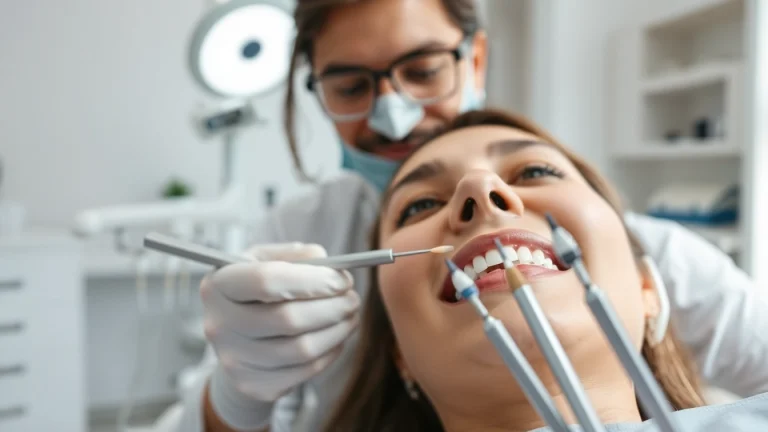
Essential Hygiene Practices for Optimal Health and Well-Being
Understanding the Importance of Hygiene
Hygiene is a fundamental aspect of human health and well-being, encompassing practices that promote cleanliness and help prevent disease. It’s a broad term that goes beyond mere cleanliness; it includes daily routines, public health measures, and environmental cleanliness. The importance of hygiene cannot be overstated, as it is directly linked to health outcomes. Effective hygiene practices can significantly decrease the incidence of infections and promote overall well-being. At a personal level, maintaining proper hygiene can enhance comfort and confidence. On a broader scale, public hygiene practices are vital in controlling disease outbreaks and ensuring community health.
Defining Hygiene: More Than Just Cleanliness
The term hygiene derives from the Greek word “Hygieia,” the personification of health. While commonly associated with cleanliness, hygiene suggests a more extensive set of practices aimed at maintaining health and preventing illness. It encompasses various categories of cleanliness behaviors: personal hygiene (including bathing, oral care, and grooming), food hygiene (preparation and handling), and environmental hygiene (keeping shared spaces clean). In essence, hygiene is about creating conditions conducive to health and preventing disease through consistent, clean practices.
The Role of Hygiene in Public Health
Public health initiatives heavily focus on hygiene practices to improve community health. Effective sanitation and hygiene reduce the risk of infectious diseases, which can have a profound impact on population health. Measures such as promoting handwashing in schools, ensuring clean drinking water, and maintaining hygienic food preparation standards are all crucial for maintaining public health. Diseases such as cholera and hepatitis A illustrate the direct correlation between poor hygiene and health outbreaks, emphasizing the necessity for public health campaigns aimed at educating the community about proper hygiene practices.
Common Misconceptions About Hygiene Practices
Several misconceptions about hygiene can impede healthy practices. For instance, some individuals might believe that using excessive soap or sanitizer is always beneficial. However, overuse can lead to skin irritation and disrupt the natural skin barrier. Similarly, the idea that wearing a mask is sufficient to protect against illness without concurrent hygiene practices overlooks the importance of keeping hands clean and maintaining a sanitized environment. Education is crucial in combating these misconceptions and fostering a culture of sound hygiene practices.
Types of Hygiene: A Comprehensive Overview
Personal Hygiene: Daily Practices for Well-Being
Personal hygiene refers to the daily practices that individuals undertake to maintain their health and well-being. These practices include regular bathing, oral hygiene, handwashing, and grooming. Proper personal hygiene helps to prevent infections and promotes physical health, self-esteem, and social acceptance. It is essential for individuals to develop habits such as brushing teeth twice daily, using deodorants, and washing hands frequently, especially before meals or after using the restroom. Each of these behaviors plays a vital role in ensuring that individuals maintain good health.
Food Hygiene: Ensuring Safety in Food Preparation
Food hygiene involves the safe preparation, handling, and storage of food to prevent foodborne illnesses. It is essential for anyone involved in food service to know best practices, including washing hands before handling food, keeping raw and cooked foods separate, and ensuring that food is cooked to the appropriate temperatures. Foodborne illnesses can have severe consequences for public health, leading to thousands of hospitalizations and deaths each year. Practicing good food hygiene minimizes these risks and contributes to overall community health.
Environmental Hygiene: Protecting Our Surroundings
Environmental hygiene refers to maintaining cleanliness in shared spaces, including homes, workplaces, and public areas. This domain of hygiene emphasizes the role of sanitation and cleanliness in reducing the risk of infections. Regular cleaning, waste management, and proper ventilation can significantly lower the prevalence of pathogens that thrive in unsanitary conditions. Community involvement in environmental hygiene initiatives, such as neighborhood clean-up days, fosters collective responsibility toward maintaining a safe and healthy living space.
Best Practices for Maintaining Good Hygiene
Essential Daily Habits for Personal Hygiene
To maintain good personal hygiene, individuals should cultivate daily habits that promote cleanliness and health. These habits include:
- Regular baths or showers: Depending on lifestyle and activity levels, bathing daily can help remove dirt, sweat, and bacteria.
- Oral hygiene: Brushing twice a day and flossing daily helps to prevent dental issues and maintain fresh breath.
- Handwashing: Washing hands with soap and water for at least 20 seconds before eating and after using the restroom is crucial for preventing the spread of germs.
- Clean clothing: Wearing fresh and clean clothes contributes to not only personal comfort but also hygiene.
Food Safety Tips Everyone Should Know
Food safety is critical in preventing foodborne illnesses. Here are some essential tips to follow:
- Wash hands: Always wash hands before and after preparing food to minimize contamination.
- Cook food thoroughly: Use a food thermometer to ensure that foods are cooked to safe internal temperatures, especially meats and poultry.
- Keep food covered: Use lids or wrap to protect food from contaminants.
- Store food properly: Refrigerate perishable items immediately and keep the refrigerator at a proper temperature to slow bacterial growth.
Creating a Clean Environment at Home and Work
A clean environment significantly contributes to maintaining overall hygiene. Here are a few strategies to implement:
- Regular cleaning schedules: Set a consistent cleaning schedule for various areas, including kitchens, bathrooms, and communal spaces.
- Use disinfectants: Invest in good-quality disinfectants to clean frequently-touched surfaces like doorknobs, keyboards, and light switches.
- Encourage a non-shoe policy: Implementing a no-shoe rule in the house can minimize dirt and bacteria brought in from the outside.
- Promote recycling: Ensure that waste is disposed of properly to maintain cleanliness and prevent pests.
The Impact of Poor Hygiene on Health
Health Risks Associated with Neglecting Hygiene
Neglecting hygiene can lead to a multitude of health risks, including the spread of infectious diseases, skin conditions, and dental issues. Poor hygiene can facilitate the growth and spread of bacteria, viruses, and parasites that thrive in unsanitary conditions, increasing susceptibility to gastrointestinal infections and respiratory illnesses. This underscores the importance of effective hygiene practices for personal and communal health.
Understanding Public Health Outbreaks and Hygiene
Public health outbreaks can often be traced back to poor hygiene practices. For example, the spread of stomach viruses in communities is frequently linked to contaminated food or surfaces. Understanding the connection between hygiene and public health is crucial in managing outbreaks. Strategies for controlling the spread of illnesses include improving hand hygiene, enhancing food safety practices, and educating the public about the importance of cleanliness.
Addressing Mental Health Issues Connected to Hygiene
Poor hygiene can also have psychological implications, as individuals struggling with mental health issues may neglect their hygiene. Conditions such as depression and anxiety can lead to decreased motivation for personal care. Addressing these challenges often requires a holistic approach, providing support and resources to encourage healthy hygiene practices as part of overall treatment. Building routines and helping individuals regain their sense of control plays a significant role in improving their mental health alongside their hygiene habits.
Evaluating Hygiene Practices: Metrics of Success
How to Assess Your Own Hygiene Habits
Evaluating personal hygiene habits involves self-assessment and reflection. Consider the following methods to measure hygiene practices:
- Self-surveys: Periodically survey yourself regarding hygiene habits, noting areas that require improvement.
- Set hygiene goals: Establish specific and measurable hygiene goals for yourself (e.g., washing hands before every meal or showering daily).
- Seek feedback: Encourage family or close friends to point out potential hygiene issues you might overlook.
Community Hygiene: Importance of Collective Responsibility
Hygiene is not only a personal responsibility but also a collective one. Communities must work together to maintain public hygiene standards. This can involve creating local initiatives to clean public spaces, organizing health drives, and promoting education on proper hygiene practices. Community awareness can significantly enhance the health and well-being of all residents, minimizing the spread of infections.
Future Trends in Hygiene Practices and Technologies
As the world evolves, so do hygiene practices and technologies. Innovations such as touchless dispensers for soap and hand sanitizer, UV-light sterilization, and smart toilets are becoming increasingly popular. These technologies not only improve hygiene but also promote user convenience. Furthermore, social media campaigns and health education programs play essential roles in raising awareness and promoting modern hygiene practices tailored to contemporary living, ensuring that hygiene remains a priority in our health paradigms.


